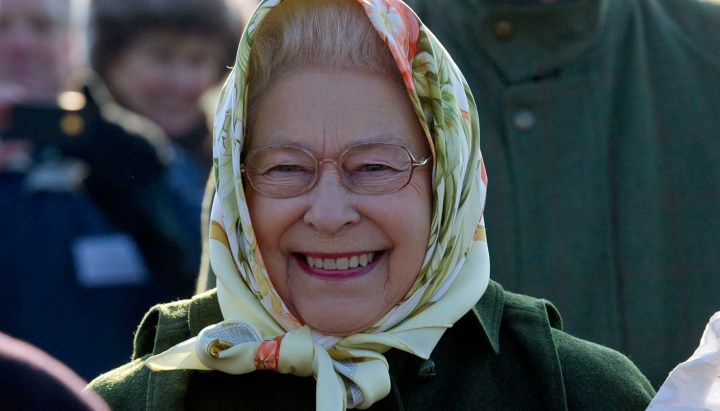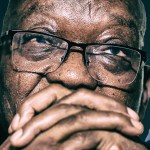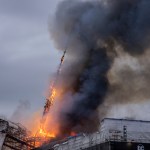Newsdeck
UK royal image riding high in queen’s jubilee year

Fifteen years ago, the death of Princess Diana left Britain's royal family looking shattered, outdated and even in danger of extinction, tarred by embarrassing scandals, wrecked marriages, and a monarchy that seemed hopelessly out of touch. By Michael Holden
Now, millions are set to flock to London next month to celebrate Queen Elizabeth’s 60 years on the throne, with gushing newspapers running photos of the royals on front pages almost daily and barely a whiff of discontent in the air.
Sports stars are happy to be pictured with them, while pop singer and reality TV judge Cheryl Cole, a darling of the British media and rarely out of the limelight, even dreams of marrying Elizabeth’s grandson, Prince Harry.
Far from being a stuffy relic of the past, the royal family, it seems, are now “cool”.
“They’re in vogue, they’re the flavour of the month,” said Mark Borkowski, one of Britain’s leading public relations experts, describing the image turnaround as amazing.
“But make no mistake. To get to this point has taken a huge amount of clever husbandry.”
The most obvious demonstration of the enduring royal pulling power and global appeal was last April’s wedding of Prince William, son of heir-to-the-throne Prince Charles, to Kate Middleton.
A global TV audience of some two billion watched the glittering display of pageantry and a million crowded the London streets to catch a glimpse of the newlyweds breeze past in a horse-drawn carriage and then pootle about in a sports car in front of the media, heading for a post-wedding reception.
“That image of Prince William and Kate Middleton, man and wife, going down the Mall in an open top sports car with a cheering crowd, that was a deliberately engineered photographic moment,” Borkowski said.
“But it also showed the confidence of an organisation to create one of those things outside the ubiquity of the kiss on the balcony.”
Rather than a one-off, the positive coverage of the royals, even those who have not always enjoyed a happy relationship with the press, continues to blossom.
Prince Charles made headlines reading a TV weather report, papers enthused about his second wife Camilla holding a replica gun on a visit to the set of cult Swedish TV drama “The Killing” and his son Harry’s trip to the Caribbean included a jocular photo session with Olympic 100 metre champion Usain Bolt.
Meanwhile, Middleton, now the Duchess of Cambridge, is front page news whenever she steps out in public and her fashion choices are followed by legions of women around the world.
It’s all a far cry from the dark days that followed Diana’s death in a Paris car crash in August 1997, a period captured in the Oscar-winning film “The Queen”.
A British public, shocked by the loss of Charles’s hugely popular first wife, was beginning to turn against the House of Windsor as it stumbled to address rising anger.
The queen’s decision to remain at her Balmoral estate in Scotland was angrily denounced by some people, as was her initial reluctance to fly a flag at half mast over Buckingham Palace because it broke with protocol.
Support for the monarchy slumped below 50 per cent for the first time ever according to one poll, while another found 70 percent of Britons thought the queen was out of touch with her people. Diana’s death also came after a series of messy marriage break-ups and infidelities among senior royals.
SOAP OPERA
“I think if you compare the front pages and the headlines of 10, 15, 20 years ago, when it was much more about the personal lives and about scandal alleged or otherwise, there was this feeling where it just seemed to be a soap opera,” a senior royal aide told Reuters.
“It just feels a fairer, saner environment now, a lot less drama,” he said, adding that William, Harry and Kate were also “brilliant standard bearers for a young generation of royals.”
Even those who want the monarchy abolished acknowledge just how much things have changed.
“The media are on board now,” said Professor Stephen Haseler, an expert on the British constitution and a leading member of Britain’s republican movement.
“I think when Diana Spencer was there and the families were falling apart, that gave the media a good line of criticism,” he told Reuters.
So how has it all come about? Within royal circles, much of the credit goes to the family themselves and the emergence of a new generation, most notably William and Harry but also the likes of the queen’s granddaughter Zara Phillips.
Seemingly far more down to earth and in touch with everyday Britons, they are able to strike a chord with the public. Others attribute it to the queen’s own understanding of their global “brand” – reputedly sharing the media’s nickname for The House of Windsor of “The Firm”.
CANNY
Former Prime Minister Tony Blair said the 86-year-old was “very canny” and had brought in “imperceptible modernisation”.
“Whilst yielding up very little of the monarchy’s mystique, she has made it come to be seen as a much more grounded part of national life,” he is quoted as saying in a recent biography of the monarch by journalist Robert Hardman.
But, many say it is the hard graft of professional PR experts the royal household turned to after Diana’s death that has really made a difference.
“(I’m) very, very impressed,” Borkowski said. “I was asked by PR Week (magazine) to say what I thought was the best campaign and for two years running I’ve said it’s been the handling of the royal image.”
Not that it is something the royal household themselves will be pleased to hear.
“They hate pieces like this, they hate people looking at it. They don’t take any comfort from the fact that people talk about the royal spin machine because they would prefer to have it anonymous,” he said.
Huge amounts of planning go into ensuring royal tours and events such as William’s wedding pass off well, and to allow the public to see the royals at their best, royal insiders say.
But they reject the idea of a grand strategy and say their goal is purely to allow the public to see the individuals as they really are, with their own charm and spontaneity the key to success.
“There are a lot of very good people who work very hard in conjunction with the royals themselves,” the aide said.
“I think the younger generation are more media savvy because they’ve grown up in a different era and are probably greater consumers of day to day media than their parents or grandparents.
“But they don’t sit around worrying or having long meetings about their PR or their image. They tend to focus more on if we’re doing something, what’s the story we’re telling and how do we tell that in the best possible way.”
The media itself is seen as crucial. The aide said media communications had moved from spin to a more honest age, while others point to the backlash over press intrusion following Diana’s death and in recent times the phone-hacking scandal at Rupert Murdoch’s British newspapers as being key.
MEDIA’S VESTED INTEREST
Haseler said media moguls, including Murdoch, had a vested interest in not shaking the British establishment in case it affected attitudes towards their businesses.
“I think if you look at that period immediately after the death of Diana you’ll see the Murdoch press ease up on them.
“I noticed the media had been very critical of the queen up until a certain point when they came back from Balmoral, and suddenly got a whiff of what would happen if these people were no longer there,” he said.
“I think the media moguls and the BBC too … they all basically drew back. Now, it’s all back to ma’am you’re so great and wonderful and well done and so on and so forth.”
Borkowski said he expected the PR good times would not last forever, while big corporations with large cheque books would be eyeing up the staff that had brought such success.
“The British media are still under the cosh and weak at the moment. They’ll get their teeth back,” he warned.
“The problems will come when there aren’t the natural organic stories. The (royals) have got an absolute low tide mark that they hit so they know just how far they can fall.”
That’s something the royal household will be keen to avoid.
“We have very, very clear policies of how we do things,” the aide said. “We don’t brief, we don’t leak, we don’t favour anyone, we do it very straight, very professional, clear and consistent. Over time that pays dividends.” DM
Photo: Britain’s Queen Elizabeth attends a tree planting ceremony in the Diamond Jubilee Wood on her Sandringham Estate in Norfolk, eastern England February 3, 2012. The Queen marks her 60th year on the throne in 2012. REUTERS/Arthur Edwards


















 Become an Insider
Become an Insider